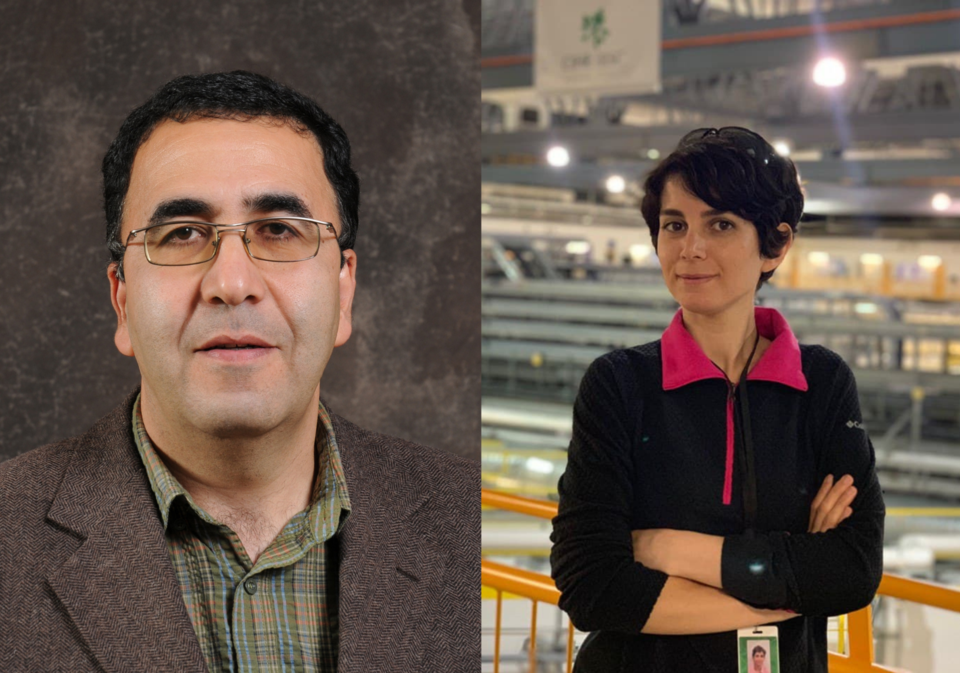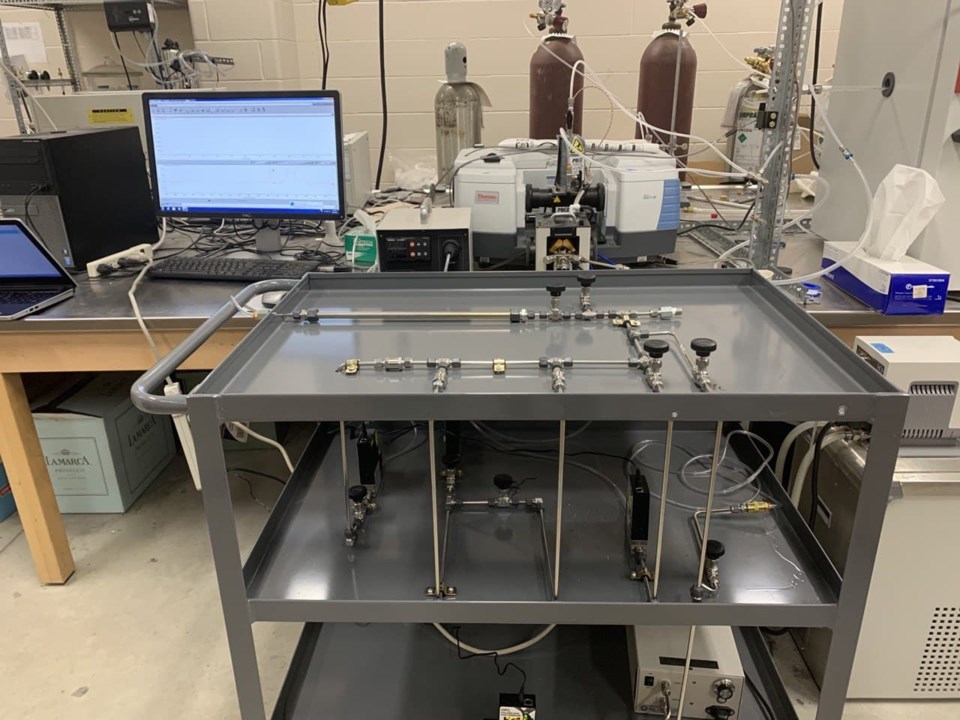A team of researchers from the University of Saskatchewan are working to develop a device to sanitize the air we breathe, which may be able to prevent the transmission of airborne viruses like COVID-19.
The team of scientists involved in the project includes experts in chemical biology, mechanical engineering, medicine and a virus specialist from VIDO-InterVac, and they have developed a working model currently being tested for effectiveness and feasibility.
The device works by using a catalyst to create active oxygen molecules on the surface of a filter, which deactivates the virus pathogens as they pass through.
“Let’s say it sharpens the teeth of regular oxygen in the air, so that it can stop the virus or organic compounds in the air,” said Dr. Jafar Soltan, chemical and biology professor at the U of S and one of the researchers working on the project. "So it becomes an active filter, where air passes the edge of this filter and it inactivates the virus and pathogens."
The device is designed to work on all types of airborne organic compounds, said Soltan, including viruses like COVID or the common flu, as well as pollutants given off by chemical solvents or polymers.
Researchers are currently working to determine how effective the device is, using the Canadian Light Source (CLS) at the U of S to take high-resolution photos of the device in action to better understand the process and improve its performance.
“As scientists, we like to question what we do and what others do to make sure it is based on solid science. And of course, as engineers, we have this obligation to protect the safety of the public, so we want to take this one step at a time, extra carefully,” said Soltan.
The next step, said Soltan, is to test the device’s effectiveness at deactivating pathogens carried in airborne water droplets, which is how experts believe the COVID-19 virus is primarily transmitted between individuals.
Researchers will first confirm results after introducing a harmless “surrogate” virus similar in structure to COVID-19 to test the device, before approaching VIDO-InterVac to run the same tests using an active COVID-19 virus.
“People are agreeing on the fact that the virus is not an individual entity in the air, that it is mostly transferred through droplets,” said Soltan. “So our treatment system should be able to really stop the virus inside these water droplets.”
 Dr. Jafar Soltan, chemical and biological engineering professor at the University of Saskatchewan (L) and Nazanin Charchi Aghdam, Ph.D candidate and research assistant (R), are just two members of the research team working on the project. (supplied)
Dr. Jafar Soltan, chemical and biological engineering professor at the University of Saskatchewan (L) and Nazanin Charchi Aghdam, Ph.D candidate and research assistant (R), are just two members of the research team working on the project. (supplied)The Research Process
Soltan has been researching ways to eliminate organic pollutants from the air using minimal energy for the last 15 years, which formed the basis to develop this device. With the arrival of COVID-19, the U of S team felt that research could be easily adapted to also address the virus.
The ultimate vision for this project is to make it available for individual and commercial use, said Soltan. Researchers are working on creating a standalone device that could be used in homes, as well as an installable filter that can be integrated into existing systems in public buildings.
“At this stage, we have the main components of our system on a stand in the lab,” said Soltan. “We will collect these and make it into a workable piece of equipment, [which] is really the heart of the process. You could put that filter in different shapes and forms depending on the application, so it could be a standalone box to put in a room and it cleans up the air, or it can become a piece of hardware that we can install as part of the air circulation unit in a house or a hospital.”
With still many tests left to be done, researchers are unable to say when the device may move from prototype to production.
“We really want to do this research as quickly as possible, to create a product that can help people. However, we have to be extra, extra careful because this deals with the health and safety of people,” said Soltan. “[The timeline] depends on the results of each phase of research still to come.”
Protective Measures
Soltan said that a device like this would be an important protective measure for more than just COVID-19, as it will offer a defence against other airborne pathogens and viruses — including ones that may not even be circulating yet.
“There are possibilities that different variations of COVID maybe living in animals could jump to humans, or because of the environmental changes in the northern Tundra [causing it] to thaw, we are seeing living bugs that were frozen there for thousands of years now coming to the surface,” said Soltan. “So really, we are preparing for challenges that possibly we may face in the future.”
Soltan feels very hopeful about the project’s progress so far and the potential it offers for the future of health and safety.
“We are very optimistic because we are putting in all the energy and resources we have behind this project,” said Soltan. “And I am glad that, as a researcher at the university, I am doing something that will benefit society and address a challenge that we are dealing with. With the university, CLS, VIDO, all these huge research infrastructures, this is where people see the benefit of that public funding and support.”




